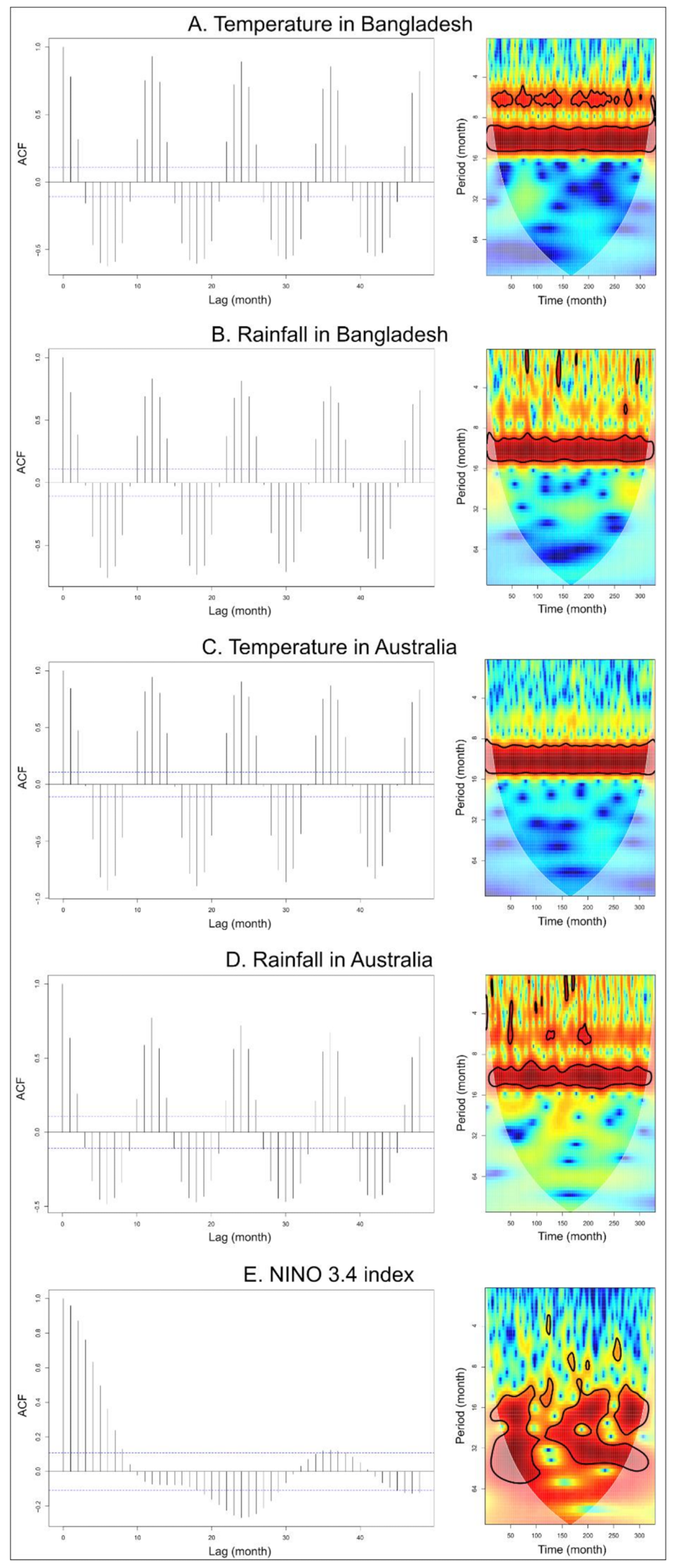Many zoonotic diseases are sensitive to climate change due to changes in habitats that introduce contact between humans and new species, as well as changes in temperature and precipitation patterns. In a recent Virus study, researchers discuss correlations between the emergence and spread of bat-borne diseases and climate events and changes.
Study: Climate anomalies and fallout from viral diseases transmitted by bats in the Asia-Pacific region and the Arabian Peninsula. Image Credit: by-studio / Shutterstock.com
About the study
Ten bat-borne viruses that emerged in the Asia-Pacific region or the Arabian Peninsula between 1990 and 2020 were studied in the present study. These viruses included four viruses belonging to the Coronaviridae family, as well as three Paramyxoviridae viruses, two Reoviridae viruses and one Rhabdoviridae virus.
Nine of these viruses have been detected in humans, while porcine acute diarrhea syndrome coronavirus (SADS-CoV) has been found in pig populations. Cattle have been implicated as an intermediate host in the emergence of Hendra virus (HeV) and Nipah virus (NiV).
Most of the viruses emerged in a single geographic area, with the exception of NiV, which first emerged in Malaysia in 1998, followed by India in 2001, and the Philippines in 2014. NiV and HeV are regularly prevalent in Bangladesh and Australia after their initial emergence.
Five of the emergence events occurred during the La Niña cooling event, while four occurred during the El Niño warming phase. The other three emergence events occurred during neutral phases.

(A) Map showing the emergence locations of bat-borne viruses in the Asia-Pacific region and the Arabian Peninsula (see Table 1) and the bat reservoir of each virus. The names of the viruses are colored according to the ENSO phase at the time of their emergence: neutral phase (black), cold phase La Niña (blue) or warm phase El Niño (red). (B) Variations of the NINO 3.4 index characterizing the El Niño Southern Oscillation (ENSO) retrieved from the National Oceanic and Atmospheric Administration (NOAA, https://www.noaa.gov, accessed May 17, 2022) from 1990 to 2020. Red and blue threshold lines indicate El Niño warming or La Niña climate anomalies cooling, respectively. The arrows indicate the timing of the emergence of new bat-borne viruses in the Asia-Pacific region and the Arabian Peninsula (see Table 1). The names of the viruses are colored according to the ENSO phase at the time of their emergence: neutral phase (black), cold phase La Niña (blue) or warm phase El Niño (red).
Study results
Residual autocorrelation function (ACF) and wavelet analyzes revealed strong seasonal trends in temperature and precipitation in Bangladesh and Australia during the emergence of NiV and HeV.
Cross-correlation analysis of these two overflow events showed that there were significant correlations with climatic variables. Specifically, NiV overflow events were correlated with monthly anomalies in precipitation, temperature, and land surface temperature, with intervals of one month, one month, and ten months, respectively. No significant correlation was found between NiV overflow events and El Niño events.
Comparatively, HeV showed correlations with El Niño index values, monthly precipitation and temperature, and land surface temperature anomalies, with intervals of seven months, one month, zero months, and three months. respectively.
Two logistic regression models were constructed based on the lag values obtained by the cross-correlation analysis. The model of recurrent HeV overflow events in Australia retained rainfall as variable but had no significant effect.
Temperature, land surface temperature anomalies and El Niño index values were also included. Precipitation had a significant effect in the model for NiV overflow events, unlike land surface temperature anomalies, mean temperature, and the El Niño index.
Structural equation modeling was used to confirm the results for HeV. This analysis showed significant correlations between recurrent overflows and mean monthly temperatures, land surface temperature anomalies, and El Niño values.
The same variables were used for the NiV, although some were not significant. Moreover, this analysis revealed that NiV fallout in Bangladesh only correlated with mean monthly temperature changes, while rainfall had no effect. Notably, these results contrasted with those reported in the previous model.
Event coincidence analysis was then used to test the hypothesis that outbreaks of bat-borne viral diseases were preceded by El Niño/La Niña climatic events. To this end, a random association between the emergence of these diseases and climatic events has been reported. Notably, a non-random association was observed with a significant precursor coincidence rate when Australian bat lyssavirus and NiV were excluded from the analysis.
The same analysis was also used to explore possible associations between El Niño values and NiV outbreak events, again showing a random statistical relationship. Significant non-random relationships were observed only if a three-month lag was used, thus suggesting an overall lag in climatic events.
The relationship between these climatic events and the HeV outbreaks in Australia was significant, as demonstrated by the seven-month lag period estimated in the cross-correlation time series analysis.

Time series and residual autocorrelation function (ACF) with significant autocorrelation values in dashed lines (left column) and wavelet power spectrum (right column) from January 1993 to June 2020 (330 months) from (A) monthly temperature in Bangladesh, (B) monthly precipitation in Bangladesh, (C) monthly temperature in Australia, (D) monthly precipitation in Australia and (E) NINO 3.4 index values decomposed into smooth trend and seasonal effect. The wavelet power values have changed from blue to red and the black contour lines indicate a significance level of 5%.
conclusion
The current study found that the spread patterns of several bat-borne viruses are strongly influenced by climate variability, each associated with different time lags. In particular, NiV spillover events are likely modified by unknown factors; however, these events are significantly affected by winter temperature, as well as a potential correlation with precipitation.
Although no relationship was observed between El Niño or La Niña events and NiV spillover, the same was not true for HeV spillover in Australia. In fact, many HeV epidemics were preceded by these climatic events. Significant correlations were also found between other sources of climate variability and HeV fallout, including temperature and land surface temperature anomalies.
As climate modeling suggests, El Niño events will increase in frequency and intensity in the future. Therefore, further investigation is urgently needed to determine the risk that these events will pose for the emergence of more diseases.
Journal reference:
- Latinne, A. &, Morand, S. (2022). Climate anomalies and fallout from viral diseases transmitted by bats in the Asia-Pacific region and the Arabian Peninsula. Virus 14(5). doi:10.3390/v14051100.




